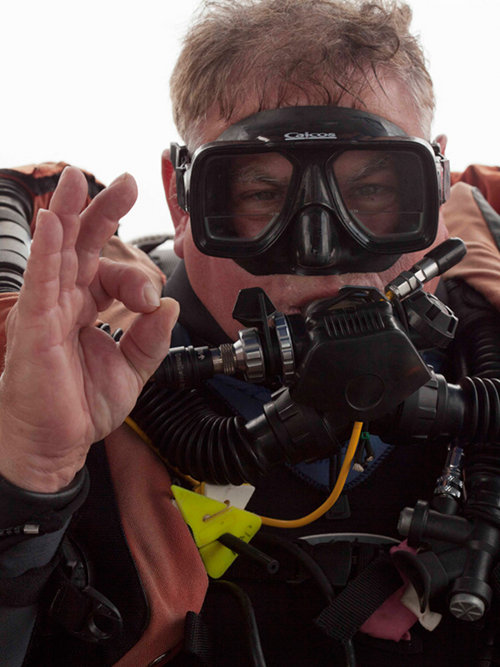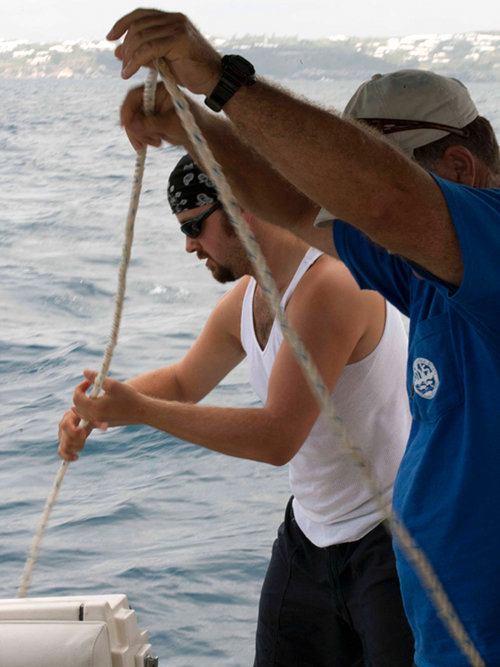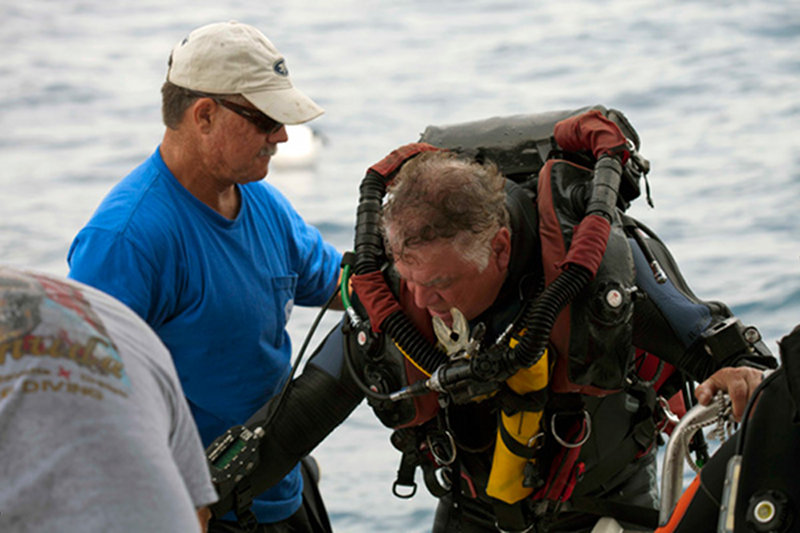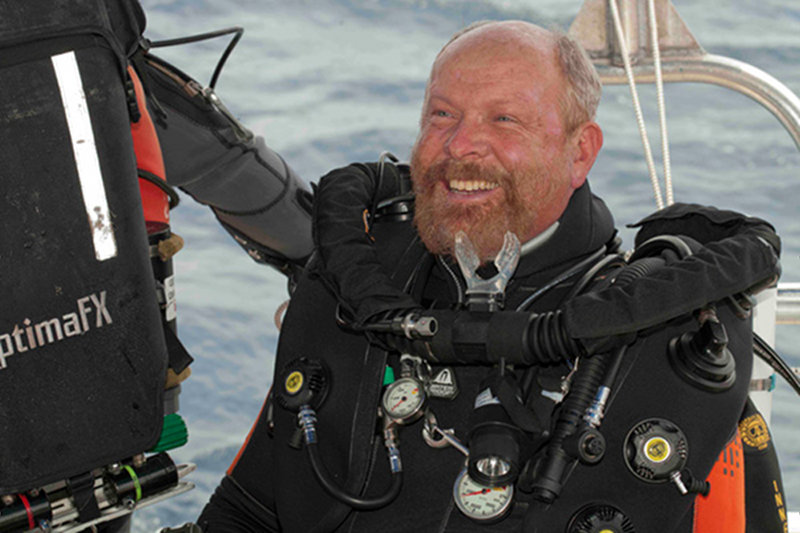
By Brett Gonzalez, Field Technician - Marine Biospeleology Lab Texas A&M University at Galveston,
Nic Alvarado, Expedition Coordinator - NOAA's Office of Ocean Exploration and Research,
and Tom Iliffe, Director, Marine Biospeleology Lab - Texas A&M University at Galveston,
June 21, 2011
Following the discovery of an ancient fossil reef off the South Shore of Bermuda, a return trip to the site was planned to recover coral samples in an effort to date the age of this reef and to identify what coral species were living there. The bottom team for this dive consisted of Paul Heinerth and myself (Tom Iliffe), with Brett Gonzalez as in-water safety diver. To reach this location, we departed in our boat, the Pourquoi Pas, from Triangle Diving and circled around the eastern end of the island, through Saint George’s Harbour and past the high cliffs and old artillery battery on Saint David’s Head to reach a point about a mile offshore from John Smith’s Bay. The winds began to pick up after several days of relative calm and the seas responded with higher swells and a few white caps, at the margin of our capacity to carry out safe dives.

Paul, pre-breathing his optima before the dive, gives the OK signal. Image courtesy of Jill Heinerth, Bermuda Deep Water Caves 2011 Exploration, NOAA-OER. Download larger version (jpg, 4.1 MB).
Paul was the first diver to enter the water and decided that since the sea state was a bit rougher than the previous days, it would be easier to attach his three bailout bottles in the water at the mooring. Paul and Brett splashed and began our swim to the mooring. The first bottle that I towed during our swim was a 10/50 trimix tank which I attached on Paul’s left side. After a swim back to Pourquoi Pas for his EAN32 nitrox bottle, Brett began to attach it to Paul when he informed me Brett that he had an electronics failure on his primary handset. Paul ran preliminary system checks in water and reiterated to Brett that it was no longer functioning. At that time, Brett communicated with our deep safety diver and project DSO (Brian Kakuk) that there was a problem and the dive is called. Our captain, Graham Maddocks, rounded the boat and Paul was assisted back to the dive deck where all previously attached tanks and gear were stripped. Further talks regarding the equipment failure commenced.

Brett and Brian deploy weighed down line. Image courtesy of Jill Heinerth, Bermuda Deep Water Caves 2011 Exploration, NOAA-OER. Download larger version (jpg, 3.1 MB).
Meanwhile inside the main cabin onboard Pourquoi Pas, Nicolas Alvarado was preparing the underwater housing to capture Tom splashing into the water to join Paul and descend into the depths below. As Nic came out of the cabin ready to jump into the Atlantic waters, he was surprised to find Paul walking back to his designated area at the stern. Everyone was quiet and anticipating the outcome from Brian. Was the golden rule going to be exercised? (in technical diving, the golden rule is that any dive can be called (or stopped), at any time for any reason without repercussion).

Brian lending Paul a hand getting back into the boat. Image courtesy of Jill Heinerth, Bermuda Deep Water Caves 2011 Exploration, NOAA-OER. Download larger version (jpg, 3.4 MB).

Tom looking at the bright side of the aborted dive, relieved that the dive was called prior to him getting in the water. Image courtesy of Jill Heinerth, Bermuda Deep Water Caves 2011 Exploration, NOAA-OER. Download larger version (jpg, 4.5 MB).
Nic inquired what had happened and upon the information being revealed, Nic offered two replacement batteries at their disposal if they needed them. Brian considered the available data and stated "I am calling it". The conditions were not ideal and it was wiser for the group to call the dive. After Brian made the decision, everyone was quiet for a few seconds as Paul and Tom nodded in agreement and Jill Heinerth states in relief, "This is great, it is so nice to dive with people without egos!" On even the most important of dives, safety takes precedence over science and it is necessary to err on the side of safety if there is any doubt whatsoever in the outcome of the mission.